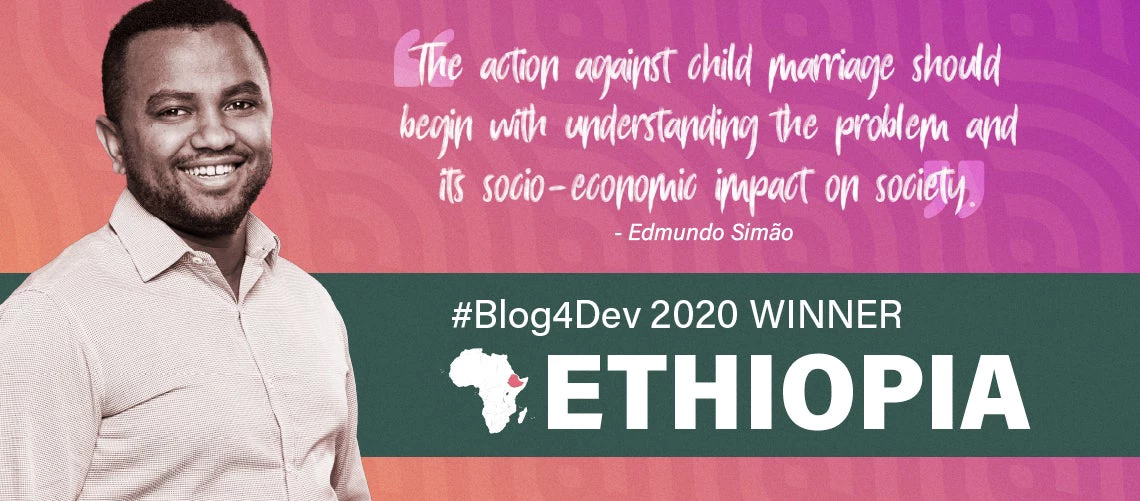 Robera Haile Hamda, Blog4Dev winner Ethiopia
Robera Haile Hamda, Blog4Dev winner Ethiopia
Handare is a girl in my neighborhood whom I used to play and study with. She had plans to become a doctor, a typical goal for top students such as Handare.
In January 2008, Handare and I (who were both 14 at the time), returned home after a long day at school. There was a gathering in Handare’s family’s house which was unusual outside of holiday season. Her family and her relatives were preparing food and drinks. Handare began crying when her mother told her that she was getting married the following Sunday to a man who she had not met before. The marriage was dictated by Handare’s family.
Now Handare is a housewife trying to feed her five children and struggling with her health. This is not only Hanadare’s story but is, unfortunately, the story of many Ethiopian girls. According to report from UNICEF, Ethiopia is among the top African countries with the prevalence of child marriage in 2018.
Handare’s dream to be a doctor was cut short. This was a big loss for her as she had a vision for a better life. It is also a lost opportunity for Ethiopia, given the number of physicians in Ethiopia is very small. Unless serious action is taken to end child marriage, many young women will follow a similar story to Handare, and child marriage will remain one of the major obstacles to Ethiopia’s social and economic development. The following measures could help Ethiopia end child marriage:
- Understand the problem and take it seriously. The action against child marriage should begin with understanding the problem and its socio-economic impact on society. The reason why child marriage is still prevalent in Ethiopia is because of a lack of understanding of the problem and the associated lack of commitment from stakeholders. This is because the stakeholders are unable to see child marriage as an imminent danger that is taking away the bright future of young girls and its huge burden on the general economy. Increasing understanding of the problem and raising awareness of its impact will be a great impetus to tackle child marriage.
- Raise legal standards. Most countries have a minimum age of 18 for marriage. If the law requires a higher age than 18, the society will strive to meet the standard and this will improve the culture of marrying at an early age.
- Join hands. All stakeholders (both government and private actors) should join hands and have a common strategic plan and subdivide responsibility for achieving it.
- Change values and norms. Changing values and norms of a society which encourages child marriage. Working on religious leaders, traditional elders, parents, men, boys and girls in raising their understating about the harmful effects of child marriage are a way to change these values and norms.


Join the Conversation